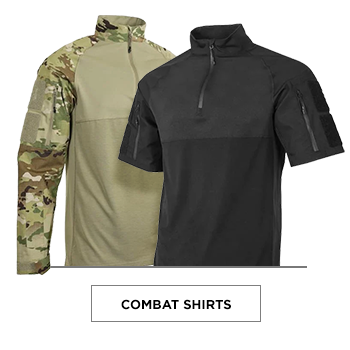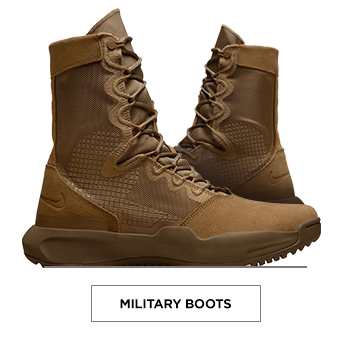Choosing the Right Materials for a Layered Clothing System
When it comes to dressing for cold and unpredictable weather, layering is key. But how do you choose the right materials for a layered clothing system that will keep you warm, dry, and comfortable? The key is to understand the purpose of each layer. The base layer, which is closest to your skin, should be lightweight, snug, and able to wick sweat away. Synthetic materials like polyester and nylon are popular choices for their ability to wick sweat well and dry quickly. If you prefer something softer, merino wool is a great alternative, though not as durable. While silk is an option, it is less efficient at moisture-wicking and not as durable. It’s important to avoid using cotton as a base layer material since it retains moisture. Moving on to the middle layer, its main function is to provide insulation. Look for materials that can trap body heat effectively. And remember, don’t forget about additional tools like outer shells and accessories for extra weather protection.

Layered Clothing: Base Layer Materials
When it comes to dressing for cold and inclement weather, layering is key. A typical layered clothing system consists of a base layer, middle layer, and outer layer. The base layer is the first layer of clothing, directly against your skin. It is important for the base layer to be lightweight, snug, and able to wick sweat away from the skin to keep you dry and comfortable. There are several materials that are commonly used for base layers, including synthetic materials like polyester and nylon, as well as natural materials like merino wool and silk.
Synthetic Materials
Synthetic materials like polyester and nylon are popular choices for base layers because they excel at wicking sweat and drying quickly. They are lightweight, breathable, and provide a snug fit without restricting movement. Polyester is known for its durability and ability to maintain its shape even after multiple washes, making it a long-lasting choice. Nylon, on the other hand, is known for its strength and abrasion resistance. Both polyester and nylon base layers are easy to care for and are affordable options for those on a budget.
Merino Wool
Merino wool is a natural material that has gained popularity in recent years for its excellent moisture-wicking properties. It is derived from Merino sheep and is known for its softness and itch-free texture. Merino wool base layers are highly breathable, regulating body temperature and keeping you warm in cold weather and cool in warm weather. Additionally, merino wool has natural antibacterial properties, meaning it is odor-resistant, even after extended wear. However, compared to synthetic materials, merino wool is less durable and more prone to stretching and pilling, which may affect its longevity.
Silk
Silk is another option to consider for a base layer, although it is less efficient at moisture-wicking compared to synthetic materials and merino wool. Silk base layers are prized for their lightweight and luxurious feel against the skin. Silk is also known for its insulating properties, providing warmth without bulk. However, it is important to note that silk is delicate and prone to tears and snags, so it may not be the most durable option for outdoor activities or extended wear.
Avoiding Cotton
While cotton may seem like a comfortable choice for a base layer, it should be avoided. Cotton has a high moisture retention rate, meaning it absorbs sweat and holds onto it, leaving you feeling clammy and uncomfortable. Additionally, cotton does not provide much insulation when wet, which can be dangerous in cold weather conditions. Instead, opt for the moisture-wicking properties of synthetic materials, the natural warmth of merino wool, or the lightweight feel of silk for your base layer.
Middle Layer Materials
The middle layer of your layered clothing system is responsible for providing insulation. It is designed to trap body heat and keep you warm in colder temperatures. There are several materials commonly used for middle layers, including fleece, down, and synthetic insulation.
Fleece
Fleece is a popular choice for a middle layer because of its excellent insulating properties. It is made from synthetic materials that are lightweight, breathable, and retain heat well. Fleece is known for its ability to trap air and create a warm barrier between your body and the outside elements. It is also quick-drying and moisture-wicking, making it a versatile choice for a middle layer. Fleece garments are available in a range of thicknesses, allowing you to choose the level of insulation that suits your needs.
Down
Down is another material commonly used for middle layers because of its exceptional insulation properties. Down is the soft, fluffy layer underneath the feathers of ducks and geese. It creates a layer of warmth by trapping air and preventing heat loss. Down is lightweight, compressible, and provides efficient insulation without adding bulk. However, one drawback of down is its susceptibility to moisture. When wet, down loses its ability to retain heat and takes a long time to dry. It is important to keep your down middle layer dry to maintain its insulation properties.
Synthetic Insulation
Synthetic insulation is a popular alternative to down for those who prefer to avoid animal products or need a middle layer that is more resistant to moisture. Synthetic insulation is made from polyester fibers that mimic the insulating properties of down. It retains heat even when wet and dries quickly. Synthetic insulation is often used in jackets, vests, and other garments designed for outdoor activities. It is a durable and affordable option that provides reliable insulation in various weather conditions.
Outer Layer Materials
The outer layer of your layered clothing system is designed to protect you from the elements, including wind, rain, and snow. It acts as a barrier between your body and the outside environment. There are several materials commonly used for outer layers, including hard shells, soft shells, and insulated shells.
Hard Shell
Hard shell outer layers, also known as rain jackets or waterproof jackets, are made from materials that provide excellent protection against wind and rain. These jackets are typically made from waterproof and windproof fabrics, such as Gore-Tex or eVent. Hard shells are designed to be lightweight and breathable, allowing moisture to escape while keeping you dry. They are ideal for activities in wet and windy conditions, such as hiking, skiing, or mountaineering.
Soft Shell
Soft shell outer layers are made from flexible and breathable materials that offer a balance between weather protection and comfort. Soft shells are highly versatile and are often used in activities where a high level of mobility is required. They are wind resistant, water repellent, and provide some insulation. Soft shell jackets are suitable for activities like hiking, climbing, and cycling, where weather conditions may vary throughout the day.
Insulated Shell
Insulated shell outer layers are designed to provide both weather protection and added warmth. These jackets typically have a waterproof and windproof outer layer, combined with insulation to keep you warm in cold temperatures. Insulated shells are ideal for activities in extremely cold weather or for individuals who feel the cold more easily. They are commonly used in activities like winter mountaineering, ice climbing, or skiing.
Choosing Synthetic Materials
When it comes to selecting materials for your base layer, synthetic options like polyester and nylon offer several benefits. Polyester is a popular choice for base layers because it has excellent moisture-wicking properties. It draws sweat away from the skin and spreads it across a larger surface area, allowing it to evaporate quickly. Polyester base layers are also quick-drying, making them ideal for activities where you may be sweating or need to wash and dry your clothing overnight. Nylon, on the other hand, is known for its strength and durability. Nylon base layers are resistant to tears and abrasions, making them a reliable choice for outdoor activities.
While synthetic materials have many advantages for base layers, it is important to consider potential drawbacks. Synthetic materials tend to have a less luxurious feel compared to natural materials like merino wool or silk. Some individuals may find synthetic materials less comfortable against the skin, especially if they have sensitive skin. Additionally, synthetic materials may trap odors more easily, requiring more frequent washing. However, advancements in fabric technology have led to the development of synthetic materials that are softer, more comfortable, and odor-resistant.

Exploring Merino Wool
Merino wool is a natural material derived from Merino sheep and has gained popularity as a base layer material. Merino wool base layers offer unique properties that make them a compelling choice for outdoor enthusiasts.
Properties of Merino Wool
Merino wool is known for its exceptional moisture-wicking abilities. It can absorb up to 30% of its weight in moisture without feeling wet or clammy. The moisture is then transported away from the skin and evaporated, keeping you dry and comfortable. Merino wool also has unique thermoregulatory properties, helping to regulate body temperature in both cold and warm environments. It provides warmth in cold weather by trapping air between its fibers, acting as a natural insulator. In warmer weather, merino wool dissipates heat and moisture, keeping you cool and dry.
Advantages and Disadvantages
One of the key advantages of merino wool is its natural odor-resistance. The fibers have natural antibacterial properties, meaning they prevent the growth of odor-causing bacteria. This makes merino wool base layers ideal for multi-day trips or activities where frequent washing may not be possible. Additionally, merino wool is incredibly soft and comfortable against the skin, providing a luxurious feel. It is also a natural and sustainable material, making it an environmentally friendly choice.
However, merino wool does have some disadvantages to consider. Compared to synthetic materials, merino wool is less durable and more prone to stretching, pilling, and tearing. It requires more delicate care, including hand washing and air drying, to maintain its quality and longevity. Merino wool base layers are also typically more expensive than synthetic options. Despite these drawbacks, many outdoor enthusiasts swear by merino wool for its superior performance and comfort.
Considering Silk
Silk is a lightweight and luxurious material that can be considered as a base layer option. While it may not have the same moisture-wicking abilities as synthetic materials or merino wool, silk offers some unique benefits.
Moisture-Wicking Ability
Silk does have some moisture-wicking properties, although not as efficient as synthetic or merino wool materials. It can absorb a small amount of moisture without feeling wet, helping to keep you comfortable during physical activities. However, it is important to note that silk does not have the same quick-drying abilities as synthetic materials or merino wool.
Durability Concerns
Silk is known for its delicate and lightweight nature, which may raise concerns about its durability. Silk base layers are prone to tears and snags, especially when subjected to rugged outdoor activities. While silk can be a suitable option for less intense activities or as a layering piece for added warmth, it may not be the most durable choice for extended wear in challenging conditions.
Why to Avoid Cotton
While cotton may be a common choice for everyday clothing, it is not suitable for a base layer in cold or inclement weather. Here are two key reasons why cotton should be avoided when layering for outdoor activities.
Moisture Retention
Cotton has a high moisture retention rate, meaning it absorbs sweat and holds onto it. This can leave you feeling damp, uncomfortable, and vulnerable to the cold. Unlike synthetic materials or merino wool, cotton does not have moisture-wicking properties, so it cannot efficiently move sweat away from the skin. As a result, cotton base layers can become heavy and stay wet for extended periods of time, leading to chills and potential health risks in cold weather conditions.
Lack of Insulation
Cotton does not provide much insulation when wet. In fact, when cotton gets wet, it can draw heat away from the body, making you feel even colder. This can be dangerous in cold weather or during outdoor activities where hypothermia is a risk. In contrast, synthetic materials and merino wool retain their insulating properties, even when damp, helping to keep you warm and protected.
Understanding Fleece
Fleece is a popular material used for middle layers in layered clothing systems. It offers excellent insulation and moisture management properties, making it a versatile choice for various outdoor activities.
Insulating Properties
Fleece is made from synthetic materials that are designed to trap air and retain heat. This makes it an effective insulator, helping to keep you warm in cold temperatures. Fleece garments create a warm barrier between your body and the outside environment, promoting thermoregulation and preventing heat loss. Fleece’s insulating properties make it ideal for activities where you need additional warmth, such as skiing, snowboarding, or winter hiking.
Moisture Management
In addition to providing insulation, fleece is also highly effective at managing moisture. Fleece has the ability to wick moisture away from the skin and disperse it across a larger surface area, facilitating evaporation. This keeps you dry and comfortable during physical activities where sweat is inevitable. Fleece also dries quickly, which is beneficial if you need to wash and dry your middle layer overnight. The moisture management properties of fleece make it suitable for high-intensity activities or situations where you may be exposed to rain or snow.
Exploring Down
Down is a natural insulating material that is often used in middle layers for its exceptional warmth-to-weight ratio. Understanding its unique properties will help you make an informed decision when selecting a middle layer.
Exceptional Insulation
Down is the soft, fluffy layer found underneath the feathers of ducks and geese. It is made up of clusters that have a high loft and trapping ability, allowing them to retain heat effectively. Down creates pockets of air within its structure, which provide insulation by preventing the escape of body heat and blocking cold air from getting in. This makes down an excellent choice for cold weather activities or situations where weight and packability are important considerations.
Issues with Moisture
While down offers unparalleled insulation, it has one significant drawback when it comes to moisture. When down gets wet, it loses its ability to retain heat and becomes heavy. Wet down takes a long time to dry, which can be problematic in damp or humid environments. If not properly cared for, wet down can contribute to hypothermia and pose significant risks to your well-being. To combat this, it is essential to protect your down middle layer from moisture by using an outer shell or ensuring you have an extra dry layer to change into when needed. There are also water-resistant and hydrophobic down options available that offer improved performance in wet conditions.
Accessories for Layering
In addition to the three main layers of a clothing system, there are several accessories that can enhance your comfort and protection against the elements. These accessories can be used in conjunction with your base, middle, and outer layers to provide added warmth and functionality.
Hats
A hat is an essential accessory for layering, as a significant amount of heat is lost through the head. Choose a hat made from insulating materials like fleece or wool to keep your head warm. Look for hats with ear flaps or a brim to provide additional protection against wind and precipitation.
Gloves
Keeping your hands warm is crucial, especially in cold weather conditions. Look for gloves that are windproof and insulated to retain heat. Consider layered gloves with a waterproof outer shell and a removable inner liner for versatility in various conditions.
Neck Gaiters
A neck gaiter is a versatile accessory that can be worn in multiple ways. It can be pulled up over your face and neck for added protection against wind and cold, or worn loosely around your neck as a scarf. Neck gaiters made from fleece or merino wool provide insulation and moisture management.
Socks
Cold feet can make any outdoor activity miserable. Invest in a good pair of winter socks that are moisture-wicking and insulating. Look for socks made from materials like merino wool or synthetic blends for optimal comfort and protection against the cold.
By understanding the different materials available for each layer and considering their properties and benefits, you can create a layered clothing system that keeps you comfortable, dry, and protected in a variety of weather conditions. Remember to adjust your layers as needed and choose accessories thoughtfully to enhance your overall layering system. Stay warm and enjoy your outdoor adventures!



